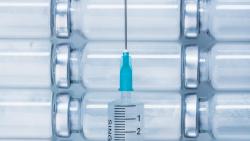
OR WAIT null SECS
- About Us
- Advertise
- Contact Us
- Editorial Info
- Editorial Contacts
- Editorial Advisory Board
- Do Not Sell My Personal Information
- Privacy Policy
- Terms and Conditions
© 2024 MJH Life Sciences™ and Pharmaceutical Technology. All rights reserved.
Blister Packaging Innovations
Equipment and Processing Report
New materials, packaging types, and quality control systems enhance product quality.
Blister packaging, a common format for solid dosage forms, continues to evolve. Equipment advances were discussed in the January 2017 Equipment & Processing Report. Alternative packages, improved quality control equipment, and new materials also help improve product quality.
Carton alternatives
Cartons are the traditional secondary package for blisters, but CR pouches provide a lightweight, flexible packaging option. To simplify adoption of a CR pouch, the Child-Guard CR track and slider from Presto Products has a Drug Master File listing. In use, the caregiver moves the Child-Guard slider over a notch, pushes down on a tab and pulls back the slider to open the pouch (1). CR pouches from Impak meet ASTM (American Society for Testing and Materials) D3475 CR standards. Sliding tab or press-to-close CR designs require two-handed dexterity to open, making access difficult for toddlers but not for seniors (2).
Quality control
Quality control systems confirm blister packaging equipment is working properly. Systems, such as the camera-based IBIS inline blister inspection system from Pharmaworks (3), check product and print on sealed blisters. Installed inline or offline, the vision system identifies flaws such as mis-shaped, damaged, missing, or rogue product, as well as incorrect color and foreign objects.
Seal integrity is checked on units such as the AMI 120 leak detector from Pfeiffer Vacuum (see Figure 1). The leak detector requires no tracer gas to nondestructively detect holes as small as five microns, a sensitivity up to 1000 times better than the traditional destructive blue dye dunk test. “Using helium as a tracer gas boosts sensitivity even more,” says Dennis Seibert, head of business development, Leak Detection, at Pfeiffer Vacuum. Time spans for the offline test range from 10–60 seconds. Calibrated orifices quantify the leak rate and provide an alert if seal quality is deteriorating. Compatible with thermoformed or cold-formed blisters, testing a different blister only involves a simple fixture change.
The VeriPac UBV leak detection system from PTI Packaging Technologies and Inspection combines vacuum with volumetric imaging to detect leaks in multi-cavity blister packs. The nondestructive test involves three steps: input the number of blister cavities; place the blister pack on the inspection plate; press start. In seconds, the display shows pass or fail, the volumetric measurement reading, and the location of any defective cavity. The technology provides rapid detection of defects as small as 10 microns in a test cycle that lasts less than 15 seconds (4).
Innovative materials
Activ-Blister material from CSP Technologies heat-stakes absorbent material to the interior of blister cavities. Silica gel and molecular sieve technology absorb tailored amounts of water vapor, oxygen, or a combination of the two to control the internal atmosphere of each cavity and protect product shelf life. The active feature can be adopted without changing the footprint of the packaging line (5).
Another option for sensitive products, Pentapharm LiquiGuard films from Klöckner Pentaplast offer protection from package leaching and moisture gain or loss. The crystal-clear, autoclavable laminate accommodates hot-fill liquids, gummies, and other emerging dosage forms. Features include a customizable moisture barrier, excellent deep-draw properties for complex blister geometries, high heat stability (the glass transition temperature of the contact layer is 120 ºC), high slip for quick release and increased productivity, and low leachability and extractability, with excellent odor and flavor retention. Applications include chewables, formulations sensitive to flavor or odor loss, nutraceuticals, pharmaceuticals, unit-dose liquids, and veterinary products (6).
References
- Presto Products, “Slide-Rite Child-Guard Track & Slider,” http://fresh-lock.com/product-list/slide-rite-child-guard-slider-zippers/, accessed Nov. 27, 2016.
- Impak, “Impak Offers the Largest Selection of Child Resistant Pouches, Plus the Option for Labeling and Custom Print,” www.impakcorporation.com/flexible_packaging/child-resistant-pouch, accessed Nov. 27, 2016.
- Pharmaworks, “IBIS Inline Inspection,” www.pharmaworks.com/index.php?id=271, accessed Nov. 23, 2016.
- PTI Packaging Technologies and Inspection, “Introducing New Non-Destructive Technology for Blister Package Testing at PACK EXPO International,” Press Release, Nov. 2, 2016.
- CSP Technologies, “CSP Technologies, Inc. Introduces Activ-Blister Solutions for Customizable Product Protection at INTERPHEX NYC,” Press Release, April 28, 2016.
- Klöckner Pentaplast, “Pentapharm LiquiGuard Films from Klöckner Pentaplast,” Press Release, Oct. 26, 2016.
About the Author
Hallie Forcinio is Pharmaceutical Technology’s Packaging Forum editor, 4708 Morningside Drive, Cleveland, OH 44109, Tel. 216.351.5824, Fax 216.351.5684, editorhal@cs.com.



